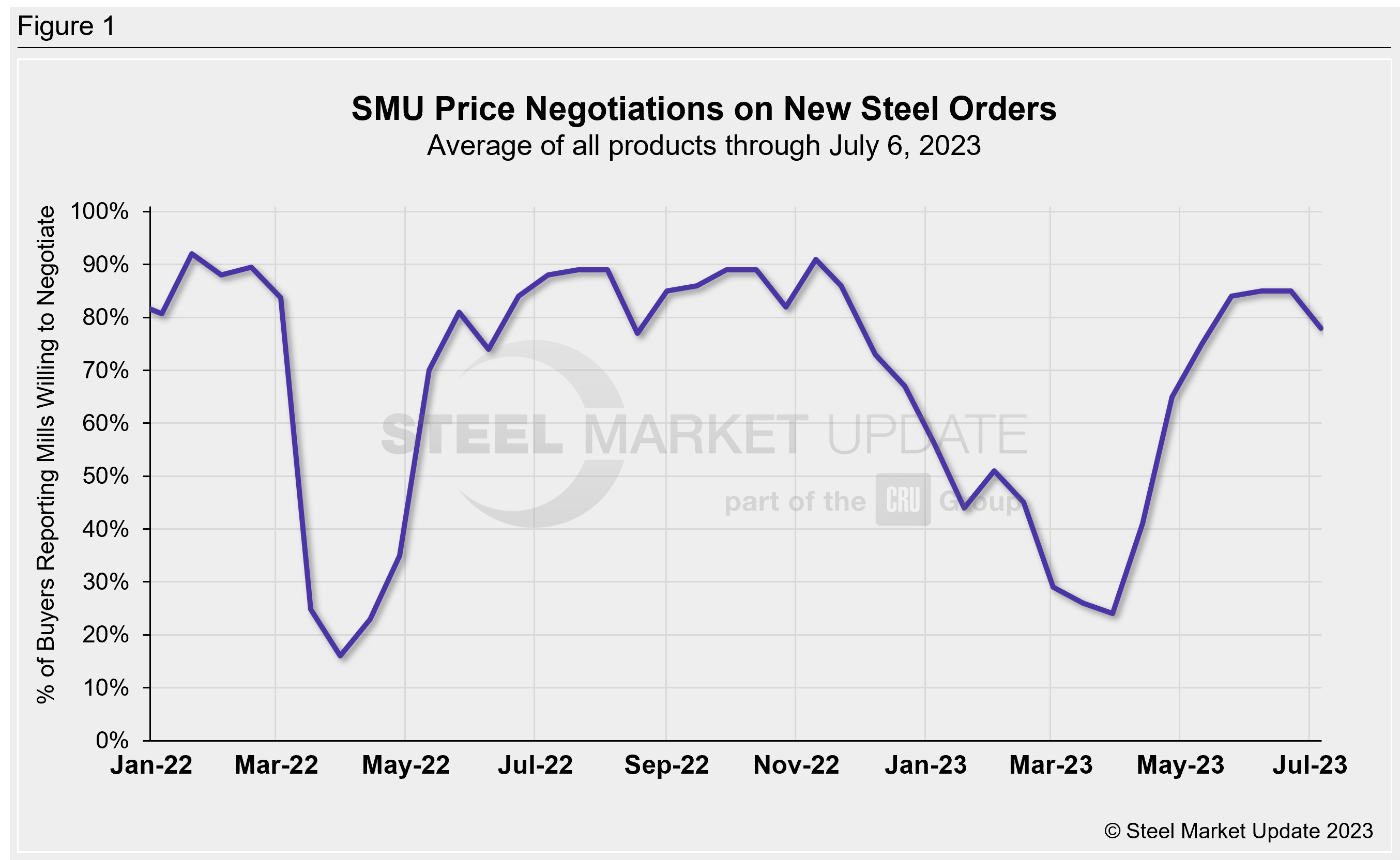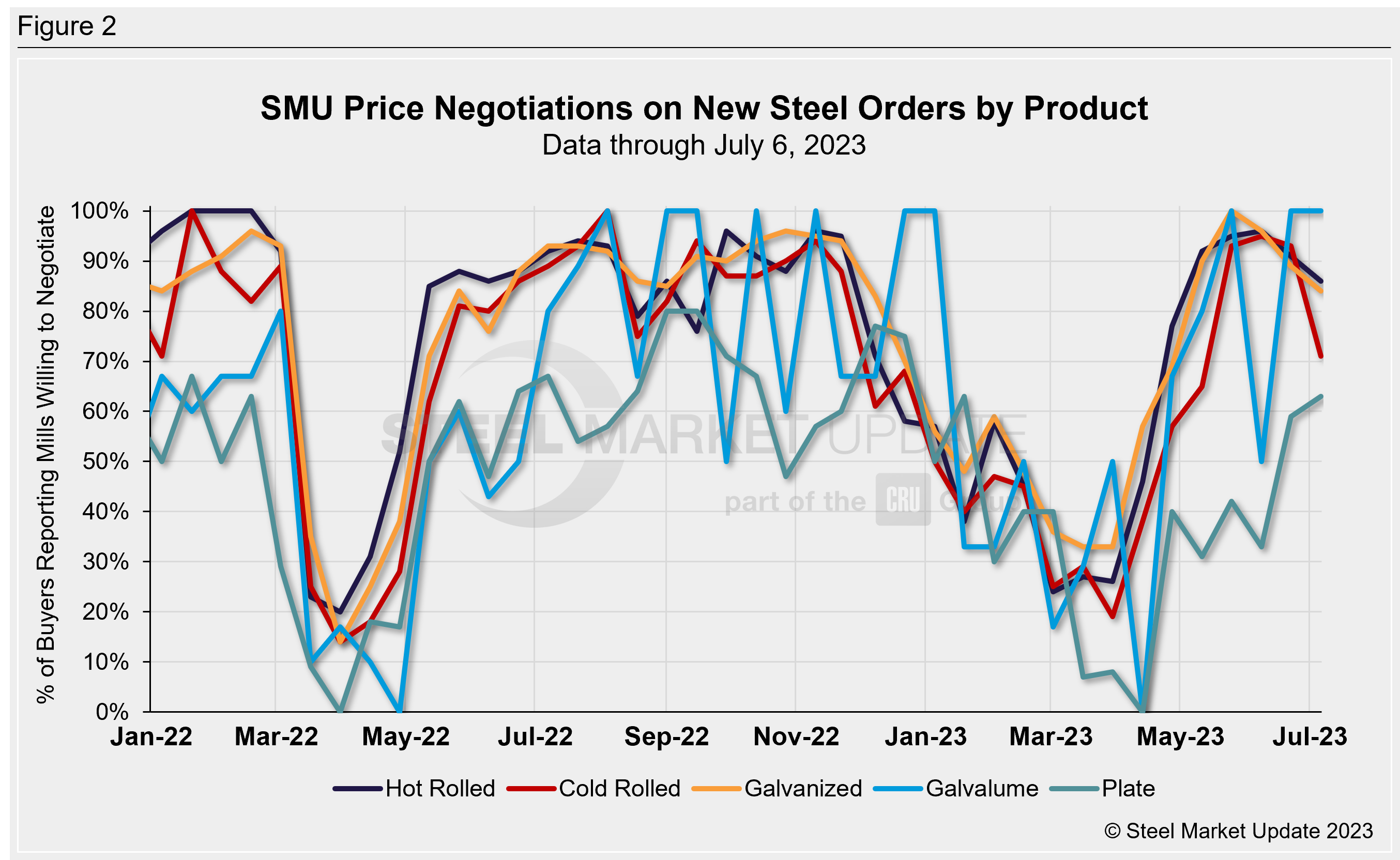SMU Data and Models

Mill Negotiations Rate Slips, But Plate Ticks Up
July 6, 2023
The overall mill negotiation rate dropped this week following the July 4th holiday, though plate bucked the trend, increasing by four percentage points, according to SMU’s most recent survey data.
The percentage of respondents saying steel mills were willing to talk price on plate stood at 63% this week, up from 59% two weeks ago, while cold rolled showed the largest decline, dropping 22 percentage points to 71% in the same comparison.
Every two weeks, SMU asks steel buyers whether domestic mills are willing to negotiate lower spot pricing on new orders. This week, (Figure 1) 78% of participants surveyed by SMU reported mills were willing to negotiate price on new orders, off seven percentage points from two weeks earlier. Since hitting a year-to-date low of 24% at the end of March, the rate had risen since, before plateauing in the mid-80s at the end of May.

Figure 2 below shows negotiation rates by product. Hot rolled fell five percentage points to 86% of buyers reporting mills more willing to negotiate price vs. two weeks earlier, while galvanized also slipped five percentage points to 84%. Galvalume remained level at 100% vs. the last market check. Recall that Galvalume can be more volatile because we have fewer survey participants there.

Note: SMU surveys active steel buyers every other week to gauge the willingness of their steel suppliers to negotiate pricing. The results reflect current steel demand and changing spot pricing trends. SMU provides our members with a number of ways to interact with current and historical data. To see an interactive history of our Steel Mill Negotiations data, visit our website here.
By Ethan Bernard, ethan@steelmarketupdate.com
Latest in SMU Data and Models

SMU’s June at a glance
A look at SMU data for the month of June.

SMU Survey: Buyers’ Sentiment rebounds from multi-year low
Both of SMU’s Steel Buyers’ Sentiment Indices edged higher this week. Current Sentiment rebounded from a near five-year low, while Future Sentiment rose to a two-month high

SMU flat-rolled market survey results now available
SMU’s latest steel buyers market survey results are now available on our website to all premium members.

SMU Survey: Sheet lead times pull back after early-June blip, plate holds
Following the uptick seen two weeks ago, lead times eased this week for all four sheet products tracked by SMU, while plate lead times held steady, according to this week’s market survey.

SMU Survey: Pricing power abruptly shifts to steel buyers
The majority of steel buyers responding to our latest market survey say domestic mills are more willing to talk price on sheet and plate products than they were earlier this month. Sheet negotiation rates rebounded across the board compared to early June, while our plate negotiation rate hit a full 100%.
